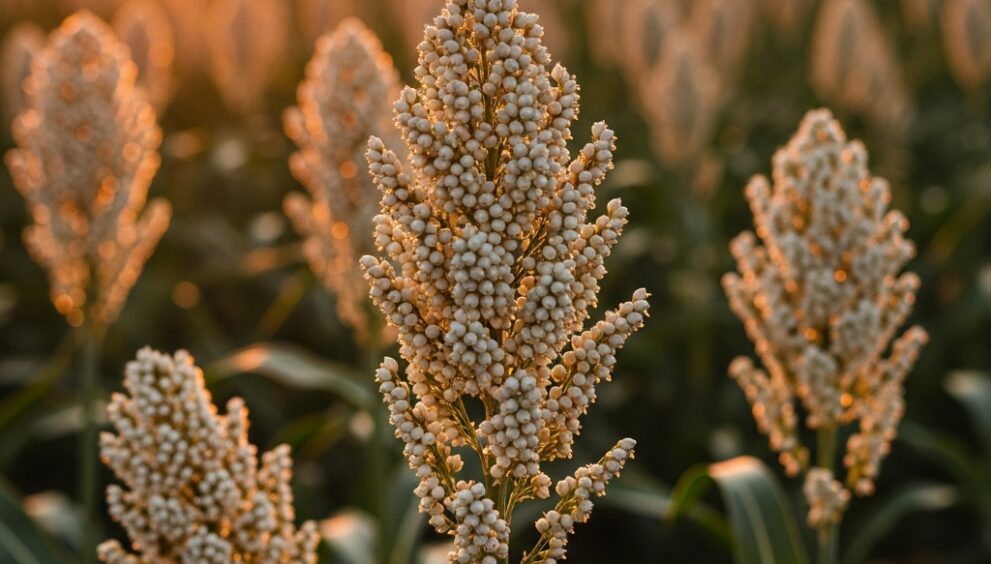
“ Africa is chock full of unique grains rich in vitamins, minerals, fiber, and protein. Even more importantly, they are quite delicious and offer a variety of textures ”
Caroline DiNicola
Africa brims with culinary treasures that extend far beyond the familiar staples of rice, wheat, and cornmeal. These ancient cereals and pseudo-grains have underpinned sustenance, culture, and medicinal traditions across the continent for millennia, yet many remain overlooked on global tables.
DiNicola cautions against modern misconceptions, urging readers to “Try not to feed into the carbohydrate fear. Whole carbs are a great source of energy for your body and keep your gut microbiome healthy”. This reminder sets the stage for exploring ten grains that not only enrich our diets but also foster resilience in the face of climate challenges and agricultural volatility.
Fonio, often celebrated as West Africa’s first cultivated cereal, stands out for its versatility and cultural resonance. Traditionally reserved for chiefs and ceremonial occasions, this coarse, fast-growing grain also serves medicinal roles; postpartum women rely on it to promote milk production and aid blood clotting. Its golden granules resemble crystallized brown sugar before cooking, yet transform into a light, cornmeal-like porridge.
DiNicola enthuses, “If you’re new to the African grain scene, start with fonio, the West African grain you should be paying attention to”, noting its effortless integration into hot cereals, baked goods, and even textured pancakes. Teff, native to Ethiopia and the Horn of Africa, has ascended from regional flatbread fame to global superfood status. Beyond its role in injera and beyaynetu platters, teff’s tiny seeds boast roughly 10 percent protein and are dense in fiber, iron, magnesium, and calcium.
When toasted and boiled, they yield a spongy porridge that readily absorbs plant-based milks and sweeteners. DiNicola asserts that “this African grain should be on everyone’s radar as it provides variety, and can add flavor to your everyday meals”, underscoring teff’s adaptability in everything from muffins and cakes to gluten-free pasta.
Finger millet, distinguished by its rust-red seed coat, thrives in East Africa’s rugged landscapes and Southern India’s fields alike. Naturally husk-free, it simplifies processing while delivering antioxidants alongside protein, iron, and calcium.
Its texture mirrors that of quinoa, making it ideal for absorbing rich, saucy stews or serving as a comforting breakfast cereal. “It’s a heaty powerhouse grain that will fill you up and keep you full,” DiNicola writes, highlighting finger millet’s ability to balance bold flavors and sustain energy.
White African sorghum traces its lineage to ancient South African soils and the Nile Valley of Egypt. Encased in a dark glume that belies its name, the grain offers a subtly sweet, corn-like taste that shines as a hot cereal or ground flour.
“ Consider a few things before swapping sorghum for wheat flour, like adding a starchy binding agent, and increasing the amount of oil called for to prevent it from drying out ”
Caroline DiNicola
Ethiopian oats, or Avena abyssinica, distinguish themselves from familiar steel-cut varieties by thriving in dry, heavy soils. DiNicola highlights local breakfast traditions: “Breakfast porridges in Ethiopia are often made with berbere seasoning, which is a
salty, spicy, savory, and sweet combination that excites the tongue with its variety and balance”. These hearty oats adapt to both sweet and savory profiles, inviting adventurous cooks to experiment with warming spices and seasonal produce.
Though technically a granulated form of durum wheat, Moroccan couscous earns its place among these grains for its global ubiquity and culinary flexibility. Its neutral, pasta-like flavor makes it the ultimate canvas for sauces, roasted vegetables, and tagines. DiNicola notes that “the neutral flavor resembling pasta allows it to be a wonderful vehicle for sauces and flavor, serving a similar purpose to many starches of African cuisine”, reminding home cooks that couscous needs no special pantry to shine.
African rice (Oryza glaberrima) predates its Asian counterpart, emerging in the fertile floodplains of Mali. Its brick-red husk yields chewy, nutty grains that lend depth to jollof rice and other richly spiced dishes.
Blurring the line between legume and grain, the Bambara groundnut showcases Africa’s ingenuity in crop diversity. Native to Nigeria, its seeds can be boiled like chickpeas or milled into a high-protein flour for baking.
Here, natural binders eliminate the need for eggs and starches, making it perfect for waffles, pancakes, and hearty breads.
“If you can get your hands on a bag of Oryza glaberrima, then feel free to use it as a breakfast grain, a vehicle to soak up a stew or meat drippings, or in any other application in which you might use Asian rice”
Caroline DiNicola
“Once you begin to use the flavorful grain legume in your baking, you’ll wonder why its popularity hasn’t exploded,” DiNicola writes, pointing to its drought resilience and nutritional density.
Pearl millet, also known as bajra or sajja, ranks among the world’s top staples, especially across the Sahel. Its starchy porridge, known as pap, anchors daily meals with warmth and satiety. Despite a slightly bitter aftertaste compared to other millets, its ability to flourish under duress secures its importance in food security initiatives.
Finally, the spinosus and Thunbergia varieties of amaranth serve as bold reminders that what many deem “weeds” often harbor hidden benefits. Amaranth’s seeds and leaves both nourish, while its flour offers a sweet, nutty complement to baked treats. DiNicola celebrates this kinship: “Amaranth is quinoa’s sweeter, nuttier, bolder cousin,” inviting cooks to broaden their palates and plates with this ancient powerhouse.
Together, these ten grains weave a narrative of sustainability, flavor, and cultural legacy. By embracing Africa’s diverse harvest, modern kitchens can honor ancestral wisdom while forging resilient foodways for generations ahead.




